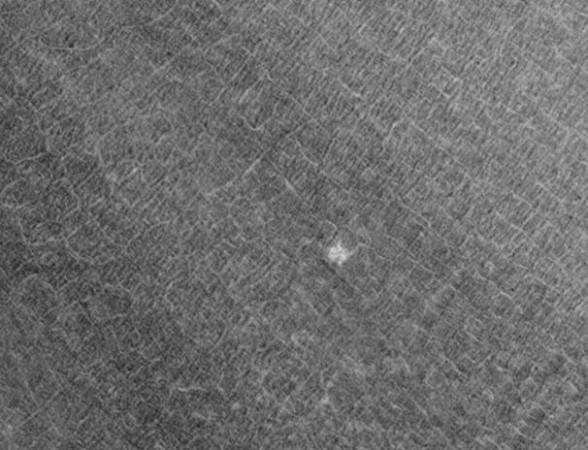
It has been revealed that Mars' Lomonosov crater, which is in the planet's northern regions, was once the cause of massive tsunamis.
Also Read: Two UFOs spotted flying by ISS in this recent footage [VIDEO]
The crater, first identified in 1973, was named "Lomonosov" after the Russian scientist who discovered it, Mikhail V Lomonosov.
The impact crater is approximately 150 metres in diameter. The hit that cause the crater is said to have unleashed a flurry of mega tsunamis across the ancient ocean that is said to have existed in the Vastitas Borealis.
A team of researchers, led by François Costard, studied the crater.
"We found typical tsunami deposits along the dichotomy between the northern hemisphere and southern hemisphere of Mars," said Costard, in a BBC report. "It supports [the idea] that there was, at that time, a northern ocean," he added.
The evidence also suggested the existence of unique geological features on the Red Planet's dichotomy boundary, also known as the lobate flow deposit.
"These lobate deposits propagate uphill from the northern plains and do so in close association with a potential palaeo-shoreline. The predictions of the numerical modelling that François and his colleagues have done provide a very persuasive case for an ocean at this time there's also a second set of landforms that we see along the coastline called thumbprint terrain," explained another researcher Steve Clifford, as quoted by the National Geographic.
"The reflection of the tsunami waves from the coast and their interaction with a second set of tsunami waves, predicted by the numerical modelling, would have resulted in sediment deposition that's very similar to what we actually observe on Mars," Clifford added.
NASA officials revealed that the existing Martian terrain was an outcome of a giant tsunami. The researchers also claim that a huge amount of debris was deposited on the Martian surface because of the asteroid impact.
NASA researchers speculate that "approximately 3.4 billion years ago, an extremely cold and dry desert existed at the surface of Mars, while enormous subsurface aquifers overlain by ice-rich permafrost retained most of the water on the Red Planet".
"The tsunami deposits likely contain rocks and sediments from the ocean floor that were picked up and transported landward by the enormous waves," said Virginia Gulick, senior research scientist at the SETI Institute and NASA Ames, and co-author of the paper.
These deposits were described to be similar to flood deposits, except that they were moving in the reverse – landward – direction, according to a NASA statement.
This study has been published in the Journal of Geophysical Research—Planets.

















